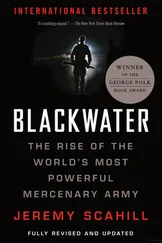After the US drone strike in Yemen in 2002 and the subsequent arrest of scores of suspected militants, al Qaeda in Yemen had been severely disrupted and was largely a theoretical entity. But after the 2006 prison break, the escaped prisoners rebuilt the dormant organization. Saleh did little to stop them. The United States was obsessed with Saleh’s recapturing Jamal al Badawi and another Cole suspect, a US citizen named Jabir al Banna, and paid scant attention to the others. “The US put a great deal of pressure on Yemen to track both men down,” according to Gregory Johnsen, the Princeton Yemen scholar. “But, as is often the case, it was not the people the US was worried most about that caused the biggest problems, rather it was those it knew too little about that proved to be the most dangerous.”
As Saleh told Townsend during her meeting with him in 2007, al Qaeda was indeed regrouping after the 2006 prison break. And, as he said, they were led by Wuhayshi, bin Laden’s former secretary. Wuhayshi was a hardened jihadist who first went to Afghanistan in the late 1990s, where he hooked up with bin Laden. In 2001, when the United States invaded Afghanistan, Wuhayshi fought in the famed battle at Tora Bora and then fled to Iran, where he was arrested and held for two years before being handed over to Yemen in 2003. He was never charged with a crime. Upon his escape from the Yemeni prison, he rebranded al Qaeda in Yemen as a regional rather than a national group, called “The al Qaeda Organization of Jihad in the South of the Arabian Peninsula,” which eventually became AQAP. Under Wuhayshi’s leadership, al Qaeda in Yemen would “become more strident, better organized and more ambitious than it has ever been before,” asserted Johnsen at the time. Wuhayshi “completely rebuilt the organization.” That al Qaeda was back in business played well for Saleh because it required the Americans and Saudis to deal with him—and more important, to fund and arm his regime. But JSOC was growing impatient with Saleh and would soon begin to expand its own operations inside Yemen, with or without Saleh’s permission.

21. Hot Pursuit
PAKISTAN, 2006–2008—Donald Rumsfeld’s run as defense secretary met an inglorious end in late 2006. A half-dozen retired generals, some of whom were important commanders in the Iraq War, joined several Republican and Democratic lawmakers to spearhead a campaign demanding his resignation. Many sought to blame him for the deteriorating situation in Iraq, others for the abuses at Abu Ghraib prison. The Republicans suffered major losses in the 2006 midterm elections and handed the Democrats a majority in both the Senate and House, which many political analysts attributed to growing opposition to the Iraq War. Among those in the White House who had pushed hard for Bush to keep Rumsfeld on board was Dick Cheney. Although President Bush initially stood by Rumsfeld, he eventually accepted the resignation. Rumsfeld was undoubtedly a major figure in the secretive assassination and torture bureaucracy launched post-9/11, but his departure would not radically shift the course of the actions and programs he had helped to shape.
In December 2006, Robert Gates succeeded Rumsfeld. Gates had a close working relationship with the CIA, where he had spent much of his professional career. He first worked for the Agency in the late 1960s and ultimately went on to serve as its director in the early 1990s—the first basement-level recruit to rise through the ranks to become director. Gates had done several stints with the NSC and also had close ties to US Special Operations Forces. He was investigated over his alleged role in the Iran-Contra scandal, and though the independent counsel concluded Gates “was close to many figures who played significant roles in the Iran/contra affair and was in a position to have known of their activities,” it was determined that his role “did not warrant indictment.” Gates was also a key player in the US-fueled war in Afghanistan against the Soviets in the 1980s. Among his first acts at the Pentagon was to put Pakistan firmly back on the US targeted kill campaign’s radar.
In testimony before the Senate Armed Services Committee three months into Gates’s tenure, Lieutenant General Douglas Lute, director of operations for the Joint Staff, asserted that US military commanders had “kill-capture” or “direct action authorities in Afghanistan,” making them “free to strike against those demonstrating a hostile act.” Lute, however, added that those authorities also permitted operations inside Pakistan. If “the enemy” attempts “to flee across the border, [t]hen we have all the authorities we need to pursue.” When asked about authority to engage in more invasive operations, such as directly targeting Osama bin Laden in Pakistan, Lute said he would only discuss it in closed session.
The “hot pursuit” arrangement had infuriated the ISI since it was first brokered by Musharraf and JSOC in 2002. Everyone in Pakistan knew the CIA was operating extensively in the country—every drone strike was a stark reminder—but the US military could not be perceived to be in the country for any purpose other than training Pakistani forces. While the Pakistani military and ISI were agitating for less US action on their soil, JSOC had been “pushing hard” for years to have greater latitude from the White House to strike inside Pakistan. JSOC wanted permission to hit, even in cases where the operation was more involved than the simple pursuit of suspected al Qaeda operatives across the border. “Give us greater latitude, we’ve got to hit where their sanctuaries are,” was how a US official described JSOC’s pitch at the time.
Although Pakistan was a fierce negotiator—at times outmaneuvering the United States—at the end of the day, it needed Washington’s money, weapons and support. The bottom line, therefore, was that if Pakistan didn’t want to deal with certain terrorist elements, JSOC and the CIA would. And the White House would sign off on it. In JSOC’s case, that meant targeted raids into Pakistan. “I think this is one of those things that the Pakistanis looked the other way at times, much like the drone program,” Anthony Shaffer, the DIA operative who worked on Pakistan extensively, told me. “I don’t believe for a minute that President [Asif Ali] Zardari and [ISI chief] General [Ashfaq Parvez] Kayani, and even Musharraf before, didn’t know we would be doing some of that.”
By 2007, the budget for US special operations had grown by 60 percent from 2003 to more than $8 billion annually. In January, President Bush announced the “surge” in Iraq. The number of conventional US forces was expanded by 20,000, but Bush also authorized a dramatic increase in targeted killing operations, spearheaded by JSOC’s forces. The operation was General McChrystal’s swan song at JSOC. By the end of 2007, the president began declaring the Iraq surge a success. This freed up JSOC to refocus on Pakistan.
Late in 2007, the Bush administration began drafting plans for a substantial escalation of the use of US Special Operations Forces inside Pakistan. The plan, however, was stalled as a result of the ongoing fight for control of Pakistan operations between the CIA and the Pentagon, described by the New York Times as “bitter disagreements within the Bush administration and within the C.I.A.” over “whether American commandos should launch ground raids inside the tribal areas.”
An incident in June 2008 underscored the risks associated with a potential expansion of US special operations activity in Pakistan. A battle between US and Taliban forces in Afghanistan’s Kunar Province spilled over into Pakistan. US forces called in air support and American choppers descended, launching missiles at the Taliban forces. The strikes also killed eleven Pakistani soldiers positioned on their side of the border. The action was denounced by Pakistan as an “unprovoked and cowardly” attack by the United States. “We will take a stand for sovereignty, integrity and self-respect,” Pakistan’s prime minister, Yousaf Raza Gillani told parliament. “We will not allow our soil [to be attacked].” The fact was, Pakistan could not back up such declarations.
Читать дальше













